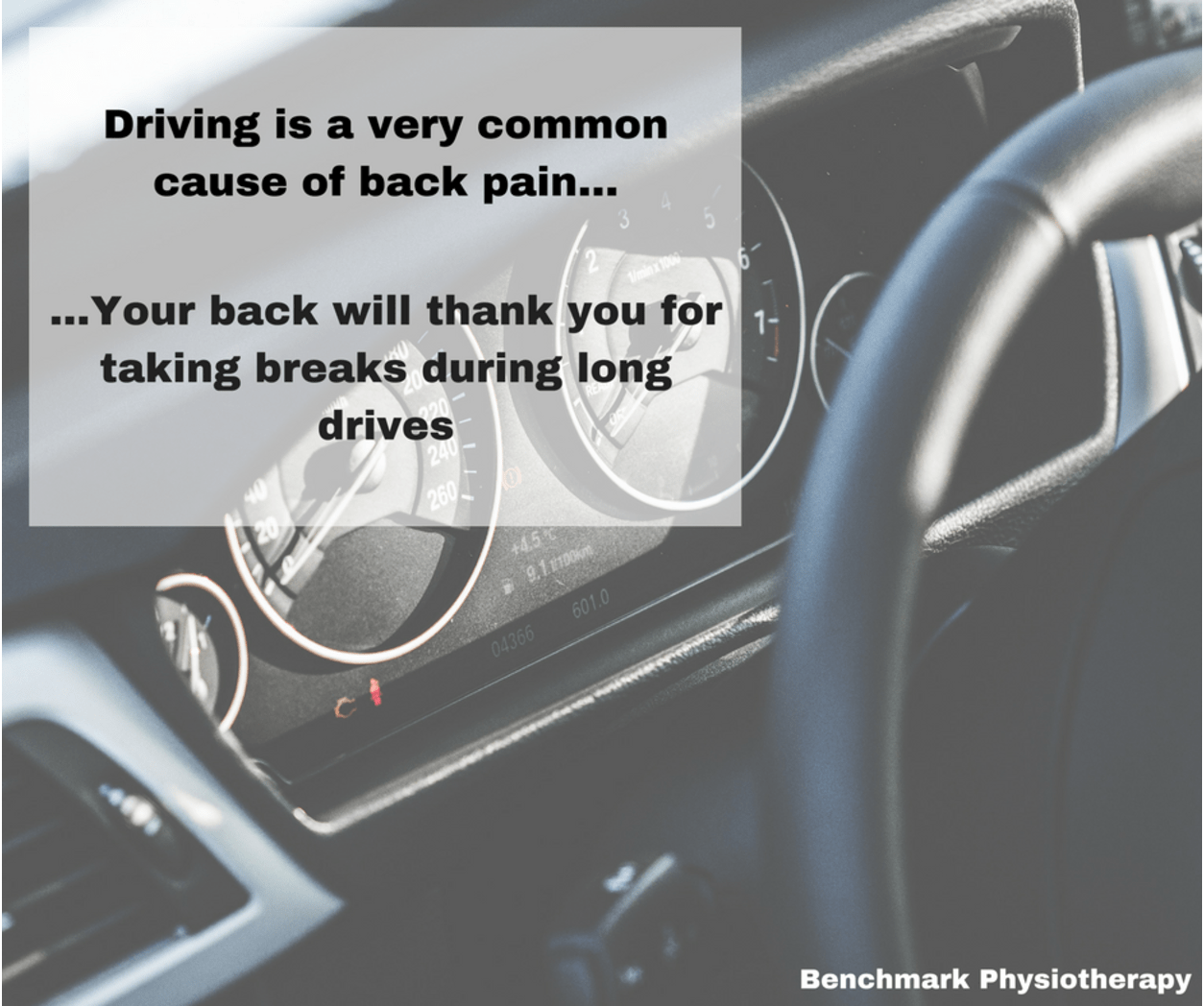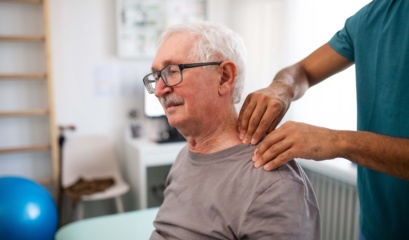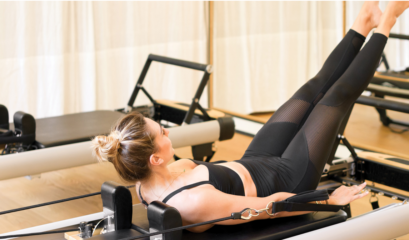Does driving, especially for long periods – make your back, neck and shoulders stiff or painful?
If it does, you are not alone.
Driving is a very common cause of spinal pain and those who spend many hours a day driving typically experience this at one time or another.
Car seats, while more easily adjusted than ever before, often don’t have enough lumbar support, which encourages poor low back posture.
This in turn causes the upper back to slump and the head and neck to poke forward.
This position is one of the primary causes of back and neck discomfort and pain when driving.
People who drive for long periods are even more vulnerable to this problem.
Along with prolonged sitting and poor back postures caused by the car seat, other factors that make driving a problem for the are are vibration, bumps and jarring from the road.
These all increase pressure placed on the discs between your vertebrae – the cushions that act as shock absorbers and allow spinal movement.
This repetitive load can then cause mechanical damage to the discs.
Here’s a few hot tips to help you reduce your back pain immediately while driving;
1) Check that you sit a comfortable distance from the wheel.
Too far away and it will cause strain in your arms, shoulder and neck.
Make sure your elbows are slightly bent and the shoulder blades are against the backrest and relaxed.
2) Check that you sit a comfortable distance from the pedals.
Too close will cause too much flexing of the knees and hips and too far will cause straining as you try to reach the pedals.
3) Check the angle of the recline.
Too much recline will force the upper back and neck to crane forward.
4) Lumbar support is critical.
Try placing a folded or rolled up towel in the low back and see if this reduces pain or improves your sitting posture.
If it does then you could invest in a good car seat lumbar support – you can purchase a top quality product from your local Physiotherapist.
5) Make sure you avoid very long periods of sitting by breaking up long trips.
Sounds obvious, but pull over – in a safe place – get out, walk around and stretch for a few minutes every hour or so.
You’ll feel a whole lot better by taking breaks during long drives, and your back will thank you for it when you reach your destination.
Now, I realise it might be more difficult to take regular breaks to walk and stretch when driving is your job, but at any opportunity it’s important in order to avoid back pain becoming a bigger problem in your life.
If you would like to have a more interactive view then click on the link below to found out more on how best to set up your seat –
www.driving.co.uk/car-clinic/how-can-i-make-sure-i-have-found-the-perfect-driving-position/









